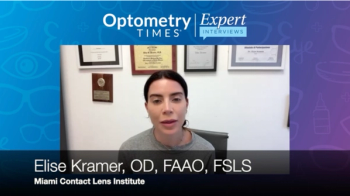
Corneal topography key to custom fitting soft lenses
While there are many factors involved, a number of individuals opt out of wearing their contact lenses every year. Randy Kojima, FAAO, a research scientist and clinical instructor at Pacific University College of Optometry, discusses how there could be a mechanical component involved.
Seattle-While there are many factors involved, such as dry eye and proper use of solutions, a number of individuals opt out of wearing their contact lenses every year.
In a talk given at the annual meeting of the American Academy of Optometry, Randy Kojima, FAAO, director of technical affairs for Precision Technology, Vancouver, Canada, and a research scientist and clinical instructor at Pacific University College of Optometry, Forest Grove, OR, discussed how there could be a mechanical component involved.
It could be that practitioners are not building the appropriate lens for each person who is fitted.
“About 26% of patients fall out the range of what might be considered normal iris size,” Kojima said. “So could this be part of the reason why a percentage of patient drop out of contact lens use?”
A keratometer only measures corneal radii, but does not measure visual iris or shape, and yet that is the tool that is used to measure virtually 100% of soft contact lenses. Thus, Kojima and his colleagues at Pacific University looked to see if this could be improved upon, and result in giving patients a better fitting lens.
The clinical application of corneal topography, along with the analysis of corneal and scleral shape, are needed to fit lenses to each individual. “But that is only part of the research,” said Kojima. The second part is finding the height and diameter of the eye, and then these factors combined will then allow for the custom design of the lens for each person.
“In the marketplace, among the major brands, we generally have one diameter option and maybe two curve options,” he said.
He explained that what they have done is to take corneal topography data and import it into fitting software, so that each and every patient gets a truly custom designed lens for their particular eyes.
Newsletter
Want more insights like this? Subscribe to Optometry Times and get clinical pearls and practice tips delivered straight to your inbox.













































